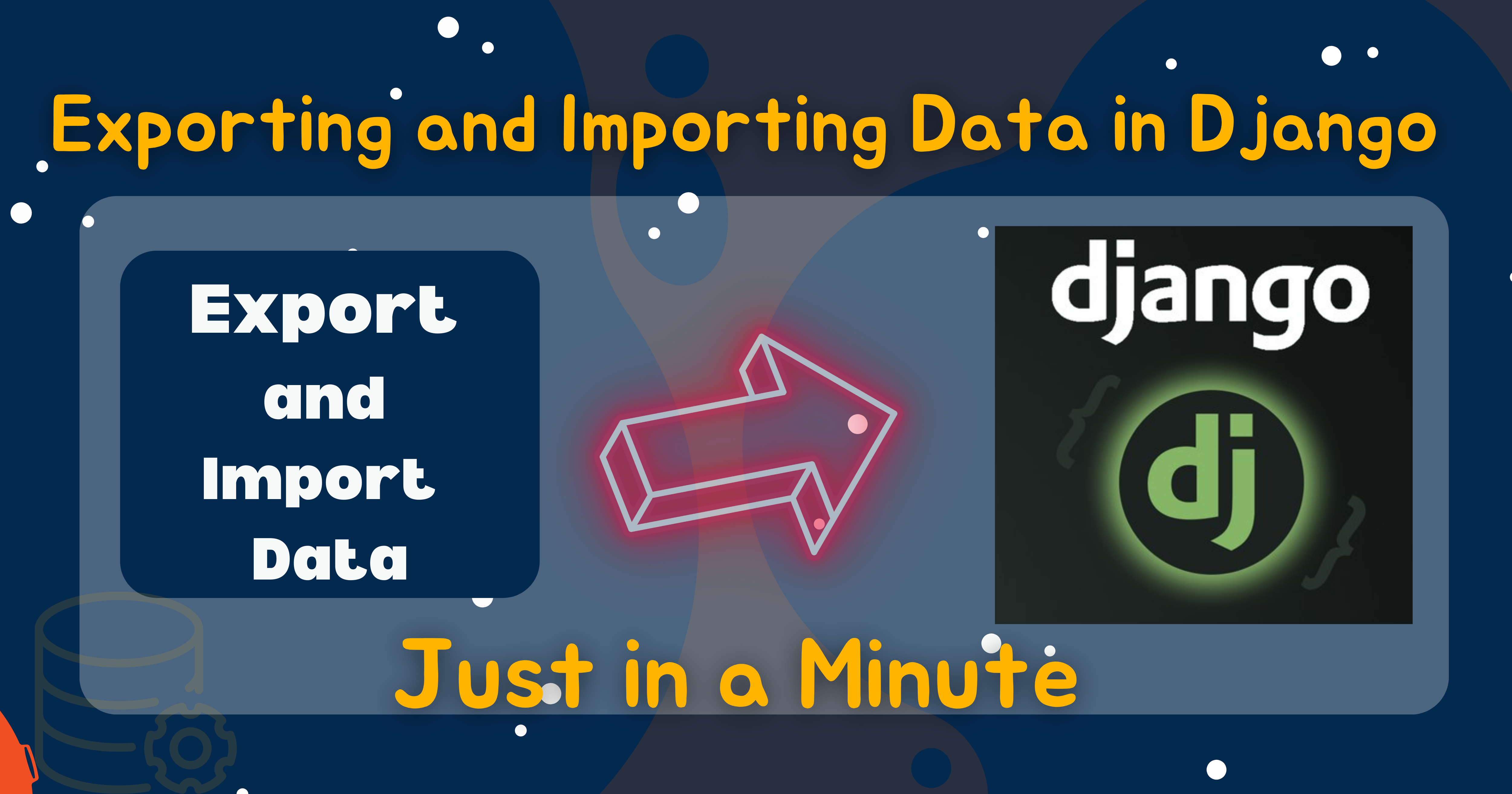Exporting and Importing Data in Django
 Amrit Adhikari
Amrit Adhikari
Introduction:
Django provides powerful tools for exporting and importing data in your web applications. This article will guide you through the process of exporting and importing data using the dumpdata and loaddata management commands in Django. These commands allow you to create data backups, transfer data between different projects, and manage data migration efficiently.
Prerequisites:
Before proceeding, ensure you have a Django project set up and running, and that you have data in your database that you want to export or import.
Exporting Data with dumpdata:
Step 1: Open the Command Line
Open your command line or terminal and navigate to your Django project's root directory. Make sure your virtual environment is activated.
Step 2: Run dumpdata to Export Data
The dumpdata command allows you to export data from your Django project. To export data for all installed apps and models, use the following command:
python manage.py dumpdata > data.json
This command exports data from all apps and models and saves it to a file named data.json. You can replace data.json with your preferred file name and path.
Step 3: Customizing the Export:
To export data from specific apps or models, specify them as arguments to the dumpdata command. For example:
python manage.py dumpdata app_name.ModelName > custom_data.json
This exports data only for the specified app and model to a file named custom_data.json.
Importing Data with loaddata:
Step 1: Open the Command Line
Navigate to your Django project's root directory in the command line.
Step 2: Run loaddata to Import Data
To import data from a JSON file, use the loaddata command:
python manage.py loaddata data.json
This command populates your database with data from the specified JSON file (in this case, data.json). Make sure the JSON file contains data in a format compatible with your Django models.
Step 3: Verify the Import
After running loaddata, you can verify that the data has been imported successfully by checking your Django admin interface or your application.
Conclusion:
Exporting and importing data in Django using the dumpdata and loaddata management commands is a straightforward and effective process. Whether you need to create backups, transfer data between projects, or manage data migration, these commands are valuable tools.
By following the steps outlined in this article, you can confidently export and import data in your Django project, ensuring data integrity and efficient data management.
Subscribe to my newsletter
Read articles from Amrit Adhikari directly inside your inbox. Subscribe to the newsletter, and don't miss out.
Written by
